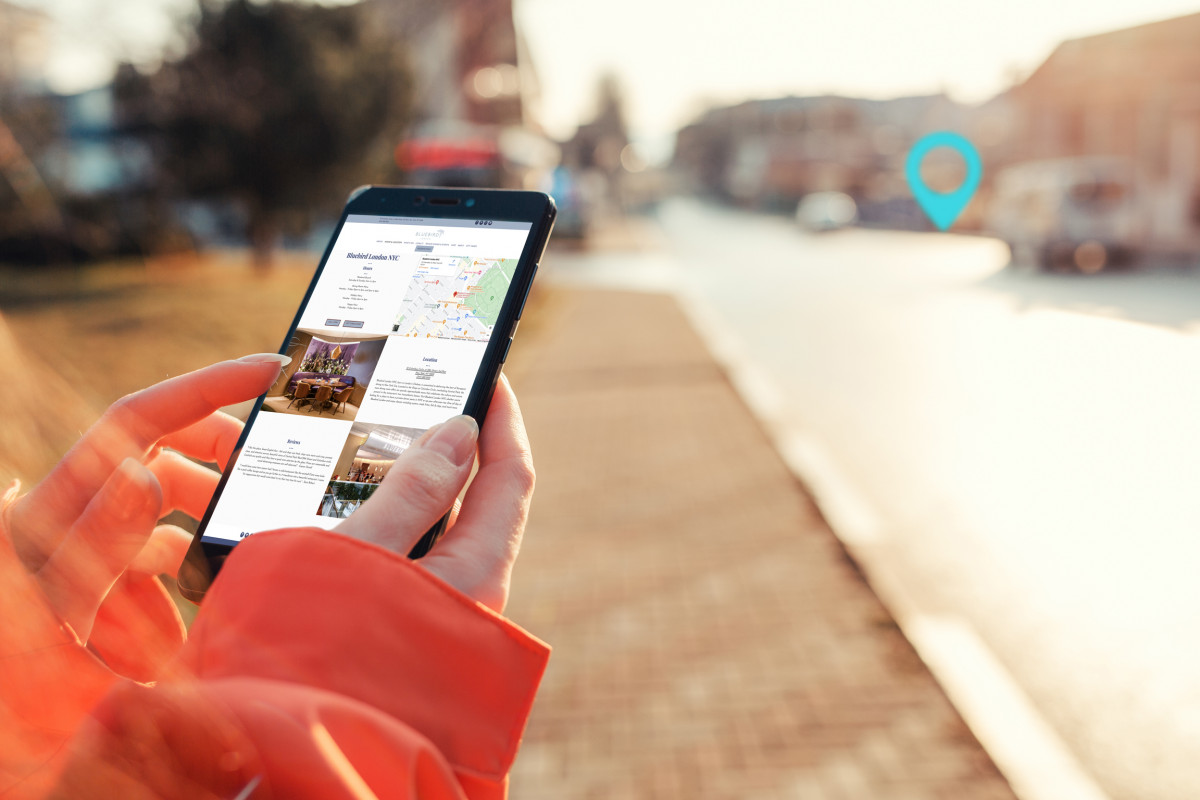If your business has a physical location, the location page on your website is a great opportunity to attract more people in your area searching for your type of business. Most companies have a contact page or feature their hours online, but to get even more people discovering you on Google and other search engines, you need a location page that includes key technical and UX elements to make the most of your SEO opportunities.
What is Local SEO?
Since Google’s mission is to provide the most relevant content on what users are searching for, there’s been an emphasis to become more granular and provide users with search results surrounding their geographic location. This trend has been especially significant with the use of mobile phones, and people searching on the go. This means that local business profiles on Google My Business (GMB) have also grown in popularity as they attract more awareness from local users.
Local SEO is the practice of optimizing online listings, like GMB, as well as the location page on your business’s website. Both of these efforts will help you show up more often for more granular, local searches in Google. You can read more about optimizing Google My Business for Local Searches from a recent post on the Hudson Hub.
Let’s look at a giant.
Look at search results for “mcdonalds”.

Notice I didn’t add “near me” to the search. The first result is the corporate site, which makes sense but it’s also serving the en-us (English, United States) version of the site; a location-based result. The second result is an actual franchise location, 160 Broadway, NY. This result showcases Google using my location to pinpoint which page on McDonald’s website makes the most sense for me to visit. Google is saying “You were probably looking for a McDonald’s to order from near you, right?”
So what does this mean? Google knows many different pages that exist on McDonald’s website, but they are more likely to show you the McDonalds’ locations. Based on decades of studying user behavior, Google has realized the most pertinent information they can serve a user should be local and actionable.
Location-based SEO for Your Business
Whether your business is a single location or has multiple stores, it’s important to create a separate location-specific page on your website for each location. Let’s dive into that location page and look at the page for McDonald’s on 160 Broadway, NY:

There are some important features to note here. All of the information on your location page should match what’s on your GMB profile (as well as other popular online listings like Yelp, Facebook, etc). Here are some specific features from this page that the McDonald’s website development team has included for SEO:
- Call to Action: Our first Call to Action (CTA) button is “Order Delivery.” In just 1 google search and 2 clicks, you can order easily from McDonalds! The featured CTA will vary from business to business, but the takeaway here is to have a featured CTA button above the fold, nudging users to do what you want them to. You can learn more about optimizing your site with CTA buttons from a recent post on the Hudson Hub.
- Get Directions: A hyperlink to ‘Get Directions.’ This is important as a brick and mortar location, to help users easily find and visit your location.
- Phone Number: Your phone number next to the address. People may want to call your business’s exact location with questions.
- Business Hours: It’s important that users know when your storefront is open and closed.
- Interactive Map: A GMB map is embedded directly on the page. This creates a powerful connection from your location page to your GMB listing.
- Services, Attributes, Amenities: This location page also includes “services”. Very often you’ll want to connect your business amenities or attributes with your location page, similar to your GMB listing.
Will Updating My Contact Page Really Help with SEO?
The purpose of a website location page is to look more like an online listing (i.e. GMB, Yelp, Facebook, etc). These networks have built location pages templates with rich, local, and granular information to rank higher in search engines and provide users with the information they’re looking for online. Having a dedicated location page will allow people to find your location and get directions, and also give them the ability to send an inquiry or contact your business.
If you’d like help auditing your website location page(s) please contact someone from Hudson Creative today!
